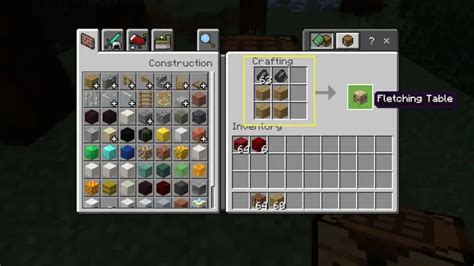Fletching Table Recipe: A DIY Guide for Archery Enthusiasts
Are you an archery enthusiast looking to create your own fletching table? Building a DIY fletching jig is a rewarding project that saves money and allows for customization. This guide provides a comprehensive recipe for building a simple yet effective fletching table perfect for your arrow fletching needs.
Materials You'll Need:
This recipe prioritizes readily available and affordable materials. You can adapt it based on what you have on hand, remembering that stability and precision are key.
- Base: A sturdy piece of plywood or MDF (at least 12" x 12"). Thicker is better for stability. Consider using a piece with a smooth, even surface.
- Clamps: Two strong clamps capable of holding your arrow securely. Bar clamps are ideal.
- Jig Body: A smaller piece of wood (approximately 6" x 4") to act as the jig's main body. This should be securely attached to the base.
- Arrow Rest: A small block of wood, slightly wider than your arrow shaft, to provide a stable rest for the arrow. This will need to be precisely positioned and attached to the jig body.
- Fletching Holder: This is where you'll attach your fletching. You can use a simple piece of wood with notches carved to precisely hold your fletching in place or purchase a commercial fletching jig attachment.
- Fasteners: Wood screws, wood glue, and possibly dowels for extra strength.
- Measuring Tools: Ruler, pencil, possibly a square or protractor for precise angle measurements.
- Sandpaper: For smoothing the surfaces of the wood.
- Finish (Optional): Paint, varnish, or other finishes to protect your table and enhance its appearance.
Step-by-Step Instructions:
This detailed guide ensures a successful fletching table build. Take your time and ensure accurate measurements for optimal results.
1. Prepare the Base:
- Clean the surface of your plywood or MDF to ensure a clean working surface.
- Lightly sand the surface for a smoother finish.
2. Attach the Jig Body:
- Carefully position the smaller piece of wood (the jig body) on the base, ensuring it's centered and level.
- Securely attach the jig body to the base using wood screws and wood glue. Pre-drilling pilot holes is recommended to prevent the wood from splitting.
3. Attach the Arrow Rest:
- Precision is vital here. The arrow rest needs to be perfectly positioned to ensure your arrows are aligned correctly.
- Use your measuring tools to carefully position the arrow rest on the jig body, considering the height and width of your arrows.
- Securely attach the arrow rest to the jig body using wood screws and wood glue.
4. Attach the Fletching Holder:
- If using a commercial fletching jig attachment, follow the manufacturer's instructions for installation.
- If making your own fletching holder, create precisely sized notches to accommodate your fletching. Accurate angles are crucial for proper fletching.
- Securely attach the fletching holder to the jig body using appropriate fasteners.
5. Finishing Touches:
- Once everything is securely attached, lightly sand the entire assembly to remove any rough edges or splinters.
- Apply your chosen finish (optional) to protect the wood and enhance its appearance. Allow it to dry completely.
Tips for Success:
- Use high-quality materials: The sturdiness of your materials directly impacts the accuracy of your fletching.
- Precise measurements are key: Take your time and double-check your measurements to ensure accuracy.
- Secure attachments: Use ample wood glue and appropriate fasteners to ensure all components are firmly attached.
- Consider adding non-slip material: Adding a non-slip material to the base can enhance stability.
This DIY fletching table recipe offers a cost-effective and customizable solution for your archery needs. With careful planning and execution, you can create a functional and accurate fletching table that will serve you well for years to come. Happy fletching!
